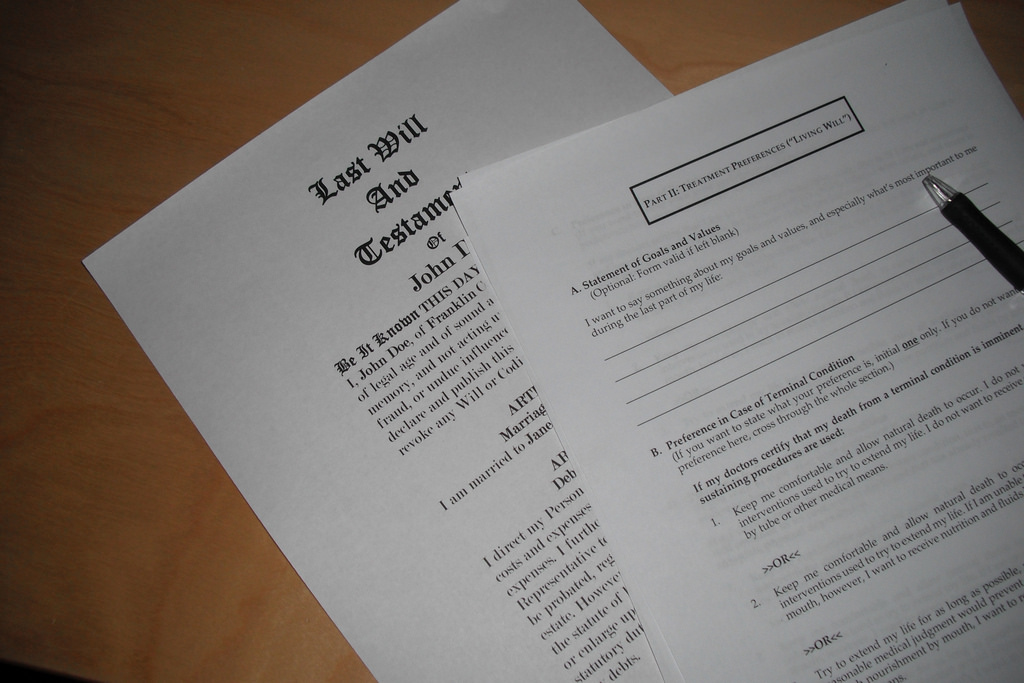If your neighbor’s driveway runs over your property, is it a permissible to dig a large ditch over the drive if the ditch impedes your neighbor’s access to their own land? Easements for neighboring properties are often necessary to access one’s own land, particularly in rural parts of the country. However, the law regarding one’s right to an easement can be complicated and difficult to navigate, especially if neighbors are at odds with one another.
Several years ago, Jack Myers decided he wanted to use his property as a commercial paintball field, but Stanley and Ruby Clodfelter, did not like the idea. In an effort to stop him, they dug a large ditch across Coe Road, preventing Mr. Myers from accessing his property, and, incidentally, his neighbor, Anna Coe, from accessing her property. Mr. Myers and Ms. Coe only have one way to access their land: Coe Road. This gravel road starts at Highway 64, goes first through the defendants’ property, then through Mr. Myers’ property and, finally, through Ms. Coe’s property. Mr. Myers and Ms. Coe help maintain the road by adding gravel and trimming trees. When the Clodfelters dug the ditch across the road, Mr. Myers and Ms. Coe sued them, asking the court to acknowledge their non-exclusive prescriptive easement through the Clodfelters’ property, and order the Clodfelters to refrain from obstructing the road. The trial court sided with Mr. Myers and Ms. Coe and, upon appeal, the Court of Appeals agreed. [1]
A prescriptive easement occurs when a person uses someone else’s land without their permission, as opposed to an easement that is granted by a deed or that passes through the chain of title. To establish the existence of a prescriptive easement, one must prove four elements:
(1) the use is adverse, hostile, or under claim of right; (2) the use has been open and notorious such that the true owner had notice of the claim; (3) the use has been continuous and uninterrupted for a period of at least twenty years; and (4) there is a substantial identity of the easement claimed throughout the twenty year period.[2]
The Clodfelters argued the first and third elements were not established: the use of the road was not hostile, adverse, or under claim or right, and Mr. Myers and Ms. Coe had not continuously been using the road for an uninterrupted twenty-year period. The Court cited two North Carolina Supreme Court cases, Dickinson v. Pake[3] and Potts v. Burnette[4], when addressing those elements. As to the first, it is not necessary to show an argument or controversy to prove hostile use, just that a party’s use is “made under claim of right.”[5] Mr. Myers and Ms. Coe never asked permission to use the road, used it openly and continuously for a long time, and maintained the road. They never considered use of the road to be a privilege, rather they believed it was their right. As such, the Court found the hostility requirement was met.
Regarding the twenty (20) years of use required for prescriptive easements, neither Mr. Myers nor Ms. Coe owned their property for that long, but instead acquired their land from Ms. Coe’s relatives, who lived on the property for over sixty years. Through “tacking,” the Court of Appeals found the twenty-year requirement was satisfied. “Tacking” occurs when a “successive adverse user[] in privity with prior adverse users can tack successive adverse possession of land so as to aggregate the prescriptive period of twenty years.”[6] The Coe Family, like Mr. Myers and Ms. Coe, used the road to access their property as if they had the right to do so. They maintained the road and shared the costs of doing so. Since the land passed from the Coe family to Mr. Myers and Ms. Coe, they were able to “tack” their years of possession onto the Coe family’s years, thus meeting the twenty-year requirement.
With all elements met, the Court held that the plaintiffs, Mr. Myers and Ms. Coe, established a right to the prescriptive easement and were entitled to use the road to access their property. Such a result seems equitable, given the fact the plaintiffs had no other way to get to their property, but easements across other property owners’ land can be tricky, especially in newly constructed neighborhoods where the twenty-year period cannot be established. An experienced attorney can help clients better understand their rights and help navigate North Carolina’s property laws.
For more information, visit Lindley Law.
[1] Myers and Coe v. Clodfelter, N.C. Ct. App., No. COA15-1307 (June 7, 2016).
[2] Perry v. Williams, 84 N.C. App. 527, 528-29, 353 S.E.2d 226, 227 (1987).
[3] Dickinson v. Pake, 284 N.C. 576, 201 S.E. 2d 897 (1974).
[4] Potts v. Barnette, 301 N.C. 663, 273 S.E. 2d 285 (1981).
[5] Dickinson at 581.
[6] Dickinson at 585.



